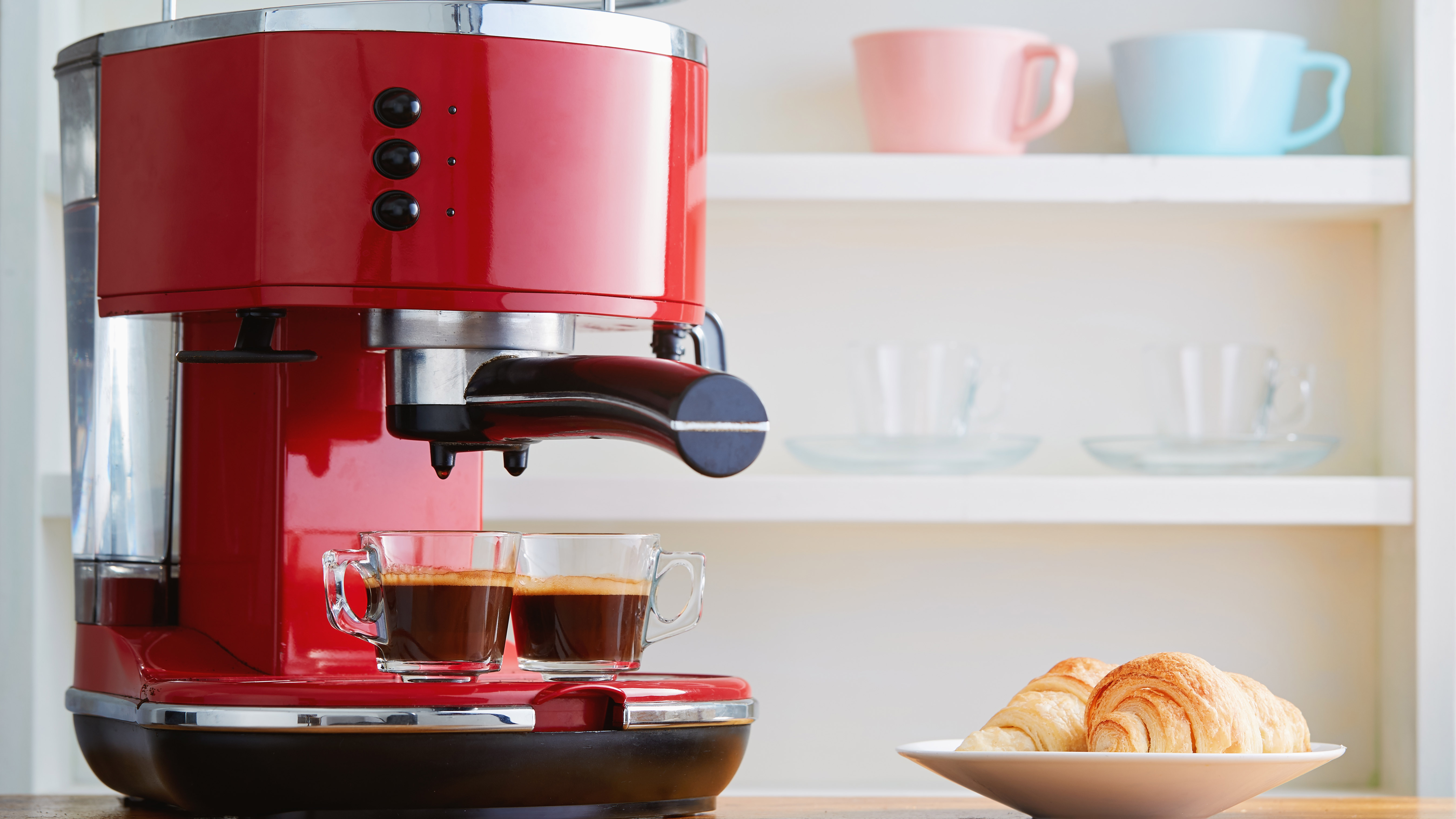How to make your favorite coffee at home
From espresso to latte, a former barista explains how

For some of us, nothing soothes the soul more than a good coffee. From short, intense espressos to long, creamy lattes, it’s never been easier to make an exceptional brew at home. That is of course if you have the right tools and the know-how.
Having one of the best coffee makers is half the battle, but according to Will Woodhouse-Banks, Operations Developer at British coffee roaster Taylors of Harrogate and a former barista, the coffee, and water you use is just as important.
While you can follow step-by-step instructions and use the correct ratios, if your coffee isn’t freshly ground or the water you use has high levels of dissolved calcium, magnesium, or other minerals in it, then it won’t taste as good as one made by a trained barista.
Fancy making coffee at home rather than reading on to find how to make various coffee-based drinks, then check out these great deals for some of the best on the market.
How to make the perfect coffee
How to achieve the perfect brew depends a lot on the beverage of your choice. However, no matter whether you’re a latte lover or craving the deep roast of an espresso, there are two aspects that are key to any coffee, and unsurprisingly that's the ground coffee and the water you use.
“Grinding your coffee will always give you a fresher, more aromatic cup,” Woodhouse-Banks said.
Woodhouse-Banks said freshly ground coffee has a lot of ‘volatile aromatics’ which contribute to a delicious brew, but these can escape if the coffee is left for too long.
Sign up for breaking news, reviews, opinion, top tech deals, and more.
“Coffee exposed to too much oxygen goes stale quickly,” he said.
If you don’t have the ability to freshly grind coffee, Woodhouse-Banks suggests storing it in an air-tight container and in a cool, dark place. For even fresher results follow the ‘best before guidelines.
It's not just the aroma and taste fresh coffee provides, it also ensures a thick, rich crema (the hazelnut-colored layer that sits on top of an espresso). This contributes to the espresso's fuller flavor and ensures a longer aftertaste than with drip coffee.
The other key to the perfect caffeine hit is good water and sometimes what comes out of the tap just won’t cut it.
“Typically hard water can make coffee taste quite muted and chalky, whereas softer water can accentuate bright acidity in coffee,” said Woodhouse-Banks
If you’re not lucky enough to live somewhere that has soft water Will suggests using a filter to help improve the taste of your brew.
So what about the nitty-gritty of making different coffees? The expert barista has shared his knowledge on how to make some of the most popular classics so that you never get your favorite wrong.

How to make coffee with a French press
A French press, which is also known as a cafetière, is one of the simplest coffee makers on the market. Just add scoops of ground coffee into the cafetière and pour over water that’s just off the boil so that it doesn’t affect the taste of the coffee. Leave the coffee and water to steep for a few minutes, you can then gently push down the coffee plunger and you’ll be left with ready-to-drink coffee.
“Getting your ratio of coffee to water just right is key to a good French press. 60g of coffee to one liter of water is the golden ratio,” said Woodhouse-Banks. So, if you want to make just one cup, then use 15g of coffee to 250ml of water.
“A cheap set of digital kitchen scales takes the guesswork out. Leave it to steep for two to four minutes depending on your strength preference,” he added.
How to make espresso
A short, intense espresso is the basis for many coffee-based drinks purchased from coffeehouses. If you want to get it right, then Woodhouse-Banks again advises you need to pay attention to the ratio.
“Modern espressos typically have a ratio of one part coffee to two parts water, so if you put 20g of coffee into your espresso machine, you want to get 40g of liquid espresso out. Most espressos taste best when the time it takes for the shot to pull sits between 25-30 seconds,” he said.
“If your shot runs through much faster than this it could be weak and sour tasting – unless it’s a darker roast.”
To solve this problem, Woodhouse-Banks advises if you’re grinding the coffee yourself, you want to make the coffee grinds finer so they compress together tighter and slow down the flow of the water – this gives it time to extract the best flavor.
“In the case of your shot taking more than 30 seconds, it might taste heavy and bitter, so you’d need to make your grinds coarser for a faster flow.”

How to make the perfect latte
A latte is the preferred espresso-based coffee for a third of Americans, according to the National Coffee Association, and uses steamed milk to turn an espresso into a long creamy drink.
After brewing an espresso, you’ll need to warm some milk and add some air to it. If you have a coffee machine with a steam wand, use this, otherwise heating the milk up on the hob or in the microwave and then use an electric mini whisk.
“You don’t want the milk too hot as it burns off the sugars and instead of a sweet, delicious coffee, you’ll end up with dry burned milk flavours,” he said.
How to make a flat white
Much like a latte, a flat white is an espresso served with steamed milk, but the milk to coffee ratio is slightly different to create a small, less creamy drink. A flat white uses roughly the same amount of coffee to milk, while a latte contains around twice the amount of milk to the double shot of espresso.
Woodhouse-Banks explained that the same rules apply to how you’d make a latte, but you need to serve the drink in a smaller cup or glass. As there’s less milk used, the drink has a stronger coffee flavor than a latte too.
How to make iced coffee
An iced coffee is a popular beverage when it's warm, as its espresso combined with milk which has been left to cool and unsurprisingly give its name is served with ice as a refreshing alternative to a hot drink. However the milk isn’t steamed or texturized in an iced coffee either.
“Start with some strongly brewed coffee, whether that be espresso or filter. Fill a glass with ice, add your coffee and top up with either cold water or cold milk.”
- Check out these great cheap coffee maker deals

Janet is a freelance journalist of nine years who specializes in film, food, and small appliances. She is passionate about connecting people with great products and services and has written for some of the biggest home and film publications around. She is also a published author and her debut novel Gothic Angel is available through Waterstones, Amazon, and other good bookshops.